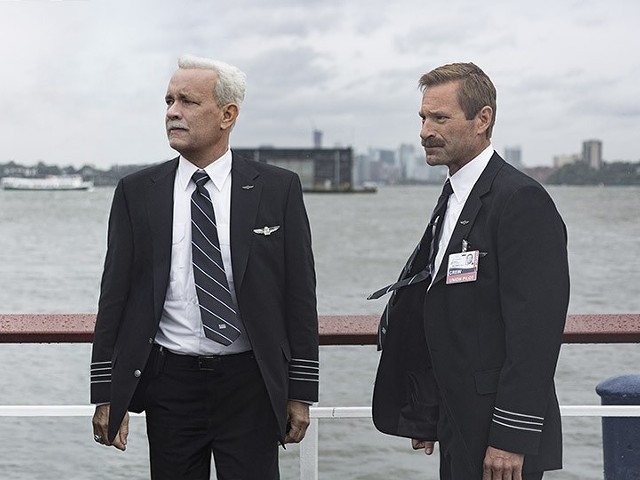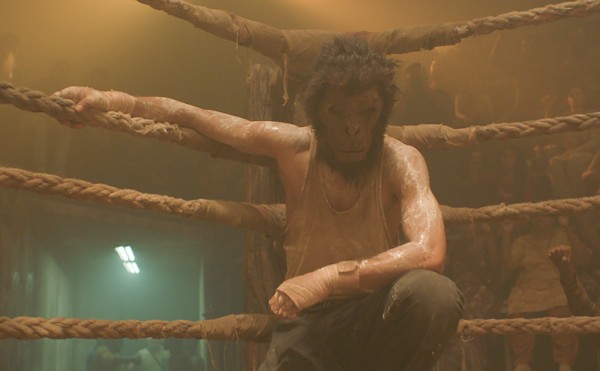As the season turns and we put this summer of wise-cracking CGI animals and generic superhero-destructowar-apocoblasts behind us and wait for the best of the festival/awards season to trickle in, a few current video releases are deserving of attention.
Orson Welles' centennial went by last year without much fanfare in his native country, perhaps because Welles is known to the general public less as a filmmaker than as an outsized personality, a large bearded man pitching cheap wine and frozen vegetables in old commercials. The popular notion that Welles never finished anything, or made only one film of interest 75 years ago, has cast a shadow over his work, an eclipse that should be diminished by the two illuminating films just released by Criterion.
We associate Welles with many things, but sensuousness is rarely one of them. That's what makes The Immortal Story, an hour-long film produced for French television in 1968, such an unexpected pleasure. His first film in color, this adaptation of an Isak Dinesen short story offers a heavily made-up Welles as Clay, a sour millionaire living — and dying — in Macao. When he is told the tale of a sailor hired to make love to the wife of a wealthy old man, the literal-minded Clay decides to turn unreliable fiction into dependable truth. He sends his bookkeeper to the streets to hire a man and woman, a naive sailor and an aging beauty (Jeanne Moreau), to bring the concept to life. Unexpectedly, Clay's actors have their own perspectives on the tale, turning The Immortal Story into a game of narratives, a fable about storytelling and reality staged by characters who can't tell the difference. It's also a valentine to Jeanne Moreau, filmed lovingly as she steals both the film and its labyrinthine plot. After two and a half decades of Shakespearean adaptations and films noir, The Immortal Story revealed a new, more romantic side of Welles, one that he was seldom allowed to pursue.
If The Immortal Story is a revelation, Criterion's other new Welles release, Chimes at Midnight, is a major rediscovery. Welles' own favorite of his works, the film has been given a well-needed restoration, which includes improving the sound synchronization, a technical problem that was beyond the director's means in 1966. Chimes is the culmination of Welles' life-long obsession with Shakespeare. He combined an edited version of both parts of Henry IV with historical texts and a small assortment of lines borrowed from other plays to tell the story of Sir John Falstaff, a larger-than-life carouser and thief who plays surrogate father to young Prince Hal just before history places him on the throne. Though surrounded by a large international cast (including Moreau, John Gielgud, Margaret Rutherford, Fernando Rey and Marina Vlady), Welles dominates the film in the center role — could he have done otherwise?
But where the Henry IV plays alternate comedy with historical drama, Welles finds almost nothing but tragedy. From an unrivaled centerpiece battle scene to the sad end of its robust hero, Welles turns Falstaff's story into a study of sadness and betrayal, of love gone wrong and relationships turned sour. Welles' definitive Falstaff takes top place among the actor's most distinguished lead roles — Kane, Mr. Arkadin, Touch of Evil's Quinlan — and the film, dismissed or ignored for years, should now be seen as one of the director's finest.
De Palma — now available on Amazon Prime and other streaming services — is the movie equivalent of Francois Truffaut's famous book on Hitchcock, a career-spanning interview/biography that's also a detailed examination of a filmmaker's cinematic style. In this case, fittingly, the subject is Hitchcock acolyte Brian De Palma.
Elaborate film sequences — the death of Sean Connery's character in The Untouchables, the high school prom in Carrie, the use of split-screen in several films — are broken down and explained eagerly by De Palma, who was a science student in his childhood and retains an eager interest in the technical details of moviemaking. Noah Baumbach and Jake Paltrow, two younger filmmakers, became friends with De Palma and, after listening to his stories of production battles with Hollywood studios, placed him in front of a camera to recount his life and to discuss every film he's made, no matter how unpopular or obscure: Carrie, Dressed to Kill and Scarface are given plenty of screen time, but so are Home Movies, Wise Guys, Dionysus in '69 and the music video for Bruce Springsteen's "Dancing in the Dark." De Palma finds something interesting to say about each of them, even when the final results were diluted by censorship, studio interference or his own uncertainty.
If you're not a fan of De Palma's work, there's more than enough in the film to convince you that the controversial director is, if nothing else, a master technician. If you're already an admirer, the film is both master class and indulgent feast, with a director who has made everything from the most elaborate studio productions to working-for-scraps indies happily discussing his greatest hits.
A post-camp, post-Rocky Horror New Wave curiosity, Wolf Gremm's Kamikaze 89 (Film Movement Classics, to be released on September 27) takes place in the near-futuristic world of 1989 (the film was made in 1982). Here all social problems have been solved, and all communications are controlled by a company called the Combine. The friendly police have a thumbs-up sign as their logo and murder has been eliminated; they just call it "premature death" instead.
When the Combine receives a bomb threat, it's up to Lt. Jansen (Rainer Werner Fassbinder, in one of his rare lead performances for another director), a hard-drinking cop with a penchant for leopard-spotted clothing, a matching pistol handle and a not-too-catchy catchphrase: Refrain from unnecessary remarks. As a mystery with science fiction elements, it's reasonably effective, but the outer trappings — the comic book design, the stunt-casting of Fassbinder, the odd characterizations — stand out. They're either a distraction or an (accidental) act of genius.
From the ridiculous to the sublimely ridiculous, what can I say about the forthcoming (also September 27) Criterion release of Beyond the Valley of the Dolls? If you're not familiar with the 1970 Russ Meyer classic (written by Roger Ebert), it might be hard to understand the fascination of this bizarre schlock/satire/morality play.
If you've seen it before, you probably know that it's an unforgettable Hollywood accident, the product of a strange and short-lived moment in 1970 when studios like Twentieth Century Fox dipped their toes into X-rated waters with little idea of what might float up. The Criterion version is rich in extra features, but the real attraction is the film itself, an unforgettable exercise in unhinged melodrama involving an all-girl rock band, a Phil Spector-like producer (if Spector was an megalomaniacal, androgynous party animal), and everything about the music industry that your mother warned you about. Parties, exploitation, out-of-control weirdness and flagrant overuse of "Incense and Peppermints." How can you resist? Make it your happening and let it freak you out.






